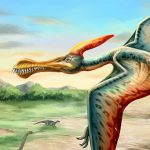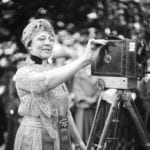 Animals
Animals  Animals
Animals  Weird Stuff
Weird Stuff 10 Weird Things People Used to Do at New Year’s
 Our World
Our World 10 Archaeological Discoveries of 2025 That Refined History
 Weird Stuff
Weird Stuff 10 Fascinating Facts You Might Not Know About Snow
 Miscellaneous
Miscellaneous Top 10 Things Crypto Was Supposed to Change & What Actually Did
 History
History 10 Huge Historical Events That Happened on Christmas Eve
 Music
Music 10 Surprising Origin Stories of Your Favorite Holiday Songs
 History
History 10 Less Than Jolly Events That Occurred on December 25
 Weird Stuff
Weird Stuff 10 Funny Ways That Researchers Overthink Christmas
 Politics
Politics 10 Political Scandals That Sent Crowds Into the Streets
 Animals
Animals 10 Species That Refused to Go Extinct
 Weird Stuff
Weird Stuff 10 Weird Things People Used to Do at New Year’s
 Our World
Our World 10 Archaeological Discoveries of 2025 That Refined History
Who's Behind Listverse?

Jamie Frater
Head Editor
Jamie founded Listverse due to an insatiable desire to share fascinating, obscure, and bizarre facts. He has been a guest speaker on numerous national radio and television stations and is a five time published author.
More About Us Weird Stuff
Weird Stuff 10 Fascinating Facts You Might Not Know About Snow
 Miscellaneous
Miscellaneous Top 10 Things Crypto Was Supposed to Change & What Actually Did
 History
History 10 Huge Historical Events That Happened on Christmas Eve
 Music
Music 10 Surprising Origin Stories of Your Favorite Holiday Songs
 History
History 10 Less Than Jolly Events That Occurred on December 25
 Weird Stuff
Weird Stuff 10 Funny Ways That Researchers Overthink Christmas
 Politics
Politics 10 Political Scandals That Sent Crowds Into the Streets
10 Peculiar Facts about the Ill-Fated Polaris Expedition
Plenty of polar expeditions ended in disaster, but the USS Polaris is a strange one. Launched in 1871, it was the first mission to the North Pole to be entirely funded by the U.S. government. In raw numbers, it was far from the worst; the crew only lost one person, and they somehow managed to return home with the same number they left with. But numerous failures and a bitter power struggle on board resulted in a tale of epic survival and an international murder mystery that remains unsolved to this day. Here are ten facts about the infamous failure of the Polaris expedition.
Related: Top 10 Chilling Expeditions To Antarctica
10 The Captain Personally Persuaded the President
In the aftermath of the U.S. Civil War, a young explorer called Charles Francis Hall made a name for himself by mounting Arctic expeditions on a shoestring budget. He made two successful trips despite his small crew and lack of equipment. This no doubt helped his credentials when it came to attracting government funding for his third adventure, which aimed to reach the North Pole. Many had died trying to do it before him, and he had competition from his rival, the scientist and explorer Dr. Isaac Hayes.
However, it would take a lot to convince the government to back him. Hall needed friends in high places. Luckily, he managed to woo the most influential friend of all: President Ulysses S. Grant. The former general was a knowledgeable Arctic exploration enthusiast. Over custom cigars, they discussed Hall’s plans in depth, and Grant concluded Hall had a vision worth supporting.
Later, he would show his support by attending a speech Hall gave in Lincoln Hall, during which Hall brought onto the stage an Inuit couple who had returned with him from his last trip. The couple mesmerized the audience with their unusual appearance, sealskin clothes, and demonstrations of hunting tools. Funding for an expedition was approved, and President Grant wrote to Hall, appointing him leader of the expedition.[1]
9 The Ship Went Further North Than Any before It
Scientists and explorers had their sights set on the Arctic in the 1800s. One popular goal was the Northwest Passage, in pursuit of which all 129 men in Sir John Franklin’s 1845 expedition perished. It was in search of survivors and artifacts of the Franklin expedition that Charles Hall made his first two Arctic trips. He helped piece together the tragic tale by speaking with the Inuits, and he brought back items from Franklin’s crew.
But by the time of Hall’s third expedition, the goal was the North Pole. Ultimately, Hall would come closer to it than any ship before him when he reached latitude 82° 29′ N. He was still south of the pole, but unable to push on through the ice, he instructed his crew to sit out the harsh winter at a spot in northern Greenland. He gave it a name that probably seemed appropriate at the time: “Thank God Harbor.” But it was here where things took a dark turn.[2]
8 The Captain Might Have Been Poisoned
The most infamous event of this ill-fated expedition was Hall’s sudden death on November 8, 1871. After returning from a two-week sled journey and drinking a cup of coffee on October 24, Hall fell seriously ill, even becoming partially paralyzed and delirious. The ship’s lead scientist, a German surgeon called Emil Bessels, blamed a stroke. But Hall blamed Bessels. The captain accused the young scientist of poisoning him and, at times, refused to be treated by him.
An inquiry later sided with Bessels and concluded that Hall died of a stroke. However, a professor writing a biography of Hall in 1968 exhumed the captain’s body and submitted hair, bone, and nail samples for chemical analysis. Lethal doses of arsenic were found to have been consumed in Hall’s final weeks, apparently confirming what many already believed: Hall was poisoned, probably by Bessels.
But why Bessels? It was common to have arsenic on board in those times, but the dose given to Hall was uncommon. It was designed to simulate a stroke. It is unlikely anyone else on board would have known how to do this.[3]
7 A Love Triangle Might Have Been a Motive

If Bessels murdered Hall, he must have had a motive. The scientist and his team had made it no secret that they did not respect their captain, but was that enough? Richard Parry, a writer who investigated the expedition for a 2001 book, theorized that Bismarck may have ordered Bessels to sabotage the journey because the German leader felt threatened by an American presence at the North Pole.
However, in 2015, a letter from Hall to a young female artist surfaced. Miss Vinnie Ream was noted for her Abraham Lincoln statues, and a bust of Lincoln that Hall displayed in his cabin on the Polaris was given to him by her. But Bessels also corresponded with Ream and socialized with her in New York. Their letters suggest their connection may have been more than friendly. Russell Potter, who found the letters, thinks this love triangle provides a plausible explanation for Hall’s poisoning, although it can never be 100% confirmed.[4]
6 Hall Was Not Officially a “Captain” nor a Scientist

Hall was ambitious and highly driven. Thanks to eight years spent living among Inuits on his previous journeys, he knew how to survive in the Arctic. But he was not respected by his crew. This was probably too weak a motive to murder him, but it certainly did not help matters. He lacked real authority. When he applied for government funding, he was not strictly entitled to call himself “Captain” because he had never served in the Navy or commanded a vessel before.
On the Polaris, command became effectively split among Hall, navigator Sydney Budington, and assistant navigator George Tyson. Hall had no scientific credentials either. He left high school before graduating and was largely self-taught. Before his career as an Arctic explorer, he worked as a publisher and engraver. When officials questioned his lack of education, Hall pointed out how most Arctic explorers did not have a formal scientific background yet were able to contribute much to the field.[5]
5 The Navigator Did Not Want to Go to the North Pole
Had it not been for the deliberate stroke-simulating doses of arsenic found in Hall’s body, another suspect in the murder might have been his navigator, Sydney Budington. Even Hall himself thought Budington was involved. The navigator was an experienced whaling boat captain who had a history with Hall, the two having fallen out on a previous trip. And if that sounds like it does not bode well for the success of the voyage, it gets worse.
Budington actually described the attempt to reach the North Pole as “a damned fool’s errand.” Yes, one of the ship’s leaders, effectively another captain, really did not want to be there. As one might expect, Budington turned the ship around as soon as possible after Hall’s death. But this did not save them from further disasters, which called into question Budington’s leadership.[6]
4 The Expedition Was Stranded in the Arctic Three Times

The USS Polaris was a steam-powered former naval tugboat. After the Civil War, its hull was reinforced with oak, and the bow sheathed in iron to make it ready for the Arctic ice. When the ice still proved too much for the vessel, Hall ordered the ship to anchor at Thank God Harbor. There, they spent the winter, and Hall met his end. Replacement captain Sydney Budington turned the ship south in August 1872, but two months later, it ran aground on a submerged iceberg after strong winds set it adrift. It seemed as though the trapped ship was going to be destroyed in a storm, but the wind and currents eventually caused it to break free.
The next problem would come when the ship began to run low on coal. Budington had allowed the crew to use the ship’s limited coal supplies recklessly in his haste to head back south. He ran the ship aground in Greenland, where the Inuits helped the crew build a hut and survive the winter. They built two more boats from wood to continue their journey, eventually being rescued by a whaler in June 1873.[7]
3 Some of the Crew Drifted on Ice for Six Months
When strong winds caused Budington to lose control of the Polaris, and it ran aground on an iceberg, the panicked captain ordered the ship’s supplies to be thrown overboard onto the ice to buoy the ship. Nineteen of the crew also clambered onto the ice, which broke away from the ship amid the darkness and confusion. The 19 were left stranded on an ice floe in what would have been a death sentence had it not been for the Inuit among them.
While they all miraculously survived for six months in the snow before being rescued, life stranded on the ice was not easy. Their Thanksgiving meal in 1872 consisted of frozen seal entrails. Budington’s response to the separation and probable death of more than half his crew has led some to describe him as the “anti-Shackleton.” He made no serious attempt to mount a rescue. Instead, he spent merely a single day scanning the horizon for his missing crew before proceeding south.[8]
2 They Returned With the Same Number of Crew Members
Despite frequently courting disaster, all of the Polaris’s crew made it back safely besides Hall. This was no small achievement, considering Franklin’s catastrophic expedition just a few decades earlier had cost the lives of 129 men. As a matter of fact, the Polaris expedition returned with the same number of people it had left with. How could this be when their captain had been murdered?
Of course, the Arctic is not exactly well populated. They did not simply meet someone out there on the ice. What happened was one of the Inuit trapped with the group on the ice floe, “Hannah” (real name Tookoolito, she was one of the couple Hall brought on stage during his talks), gave birth to a baby girl who also survived the journey back.[9]
1 Two Search Vessels Would Later Be Caught in Their Own Arctic Disaster
In June 1873, the USS Juniata set sail in search of survivors from the Polaris expedition. After reaching Labrador, a smaller vessel specially designed for the ice was launched. Called the Little Juniata, it was headed by George DeLong and his lieutenant, Charles Chipp. They safely traveled north and determined that the Polaris’s survivors had already been rescued. Their first Arctic duty had gone well. The same cannot be said for their later journey.
In 1879, DeLong returned to the Arctic as commander of the Jeannette expedition to explore an unknown region north of Alaska and Siberia. Chipp accompanied him. However, the Jeannette got stuck in ice for two years, drifting around in constant danger of being crushed. The worst happened on June 12, 1881, and the crew had to abandon ship into five lifeboats. Chipp’s boat sunk during a storm, and DeLong’s became separated from two of the others. He reached Siberia and bravely sent the strongest members of his party ahead to seek help. They reached a village, but the harsh winter made it impossible to find DeLong again. He froze along with his remaining men at their camp in northern Siberia.[10]








